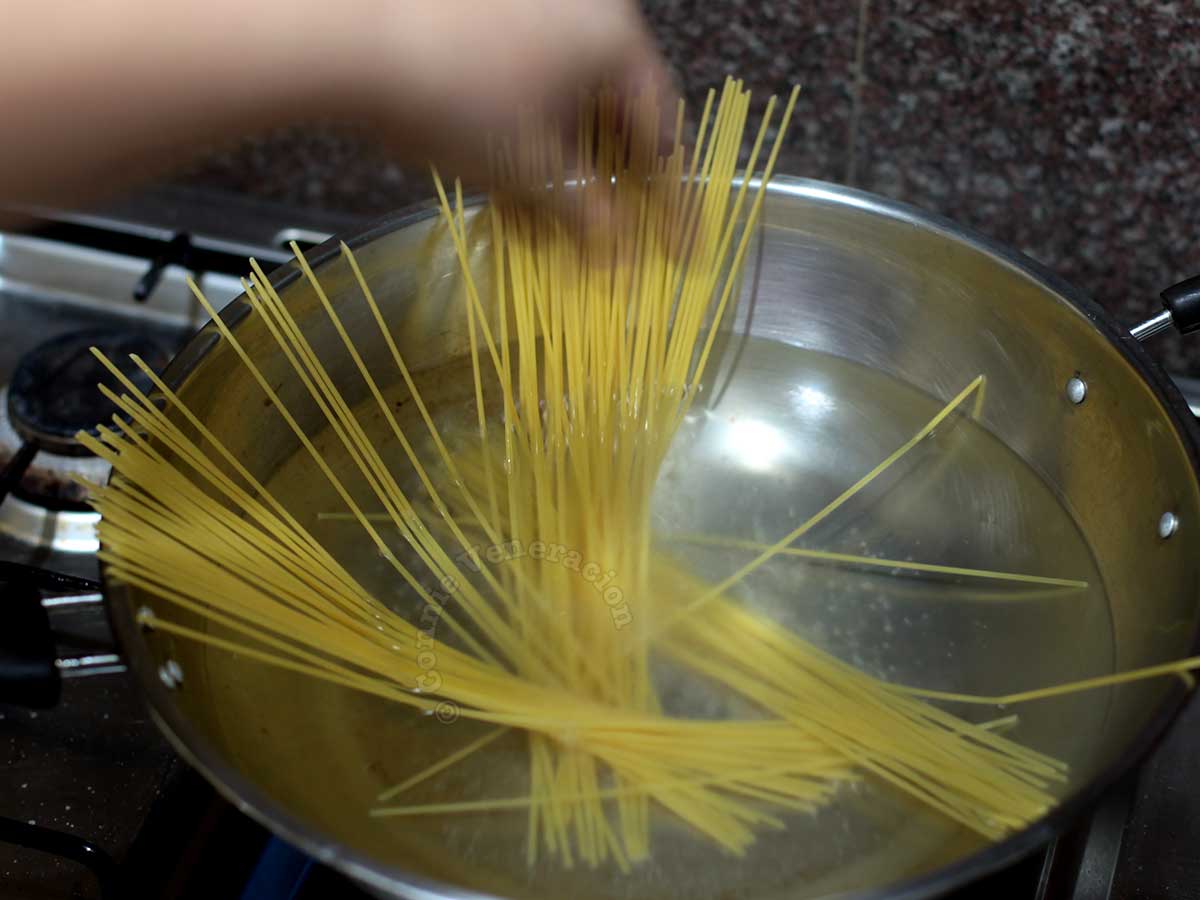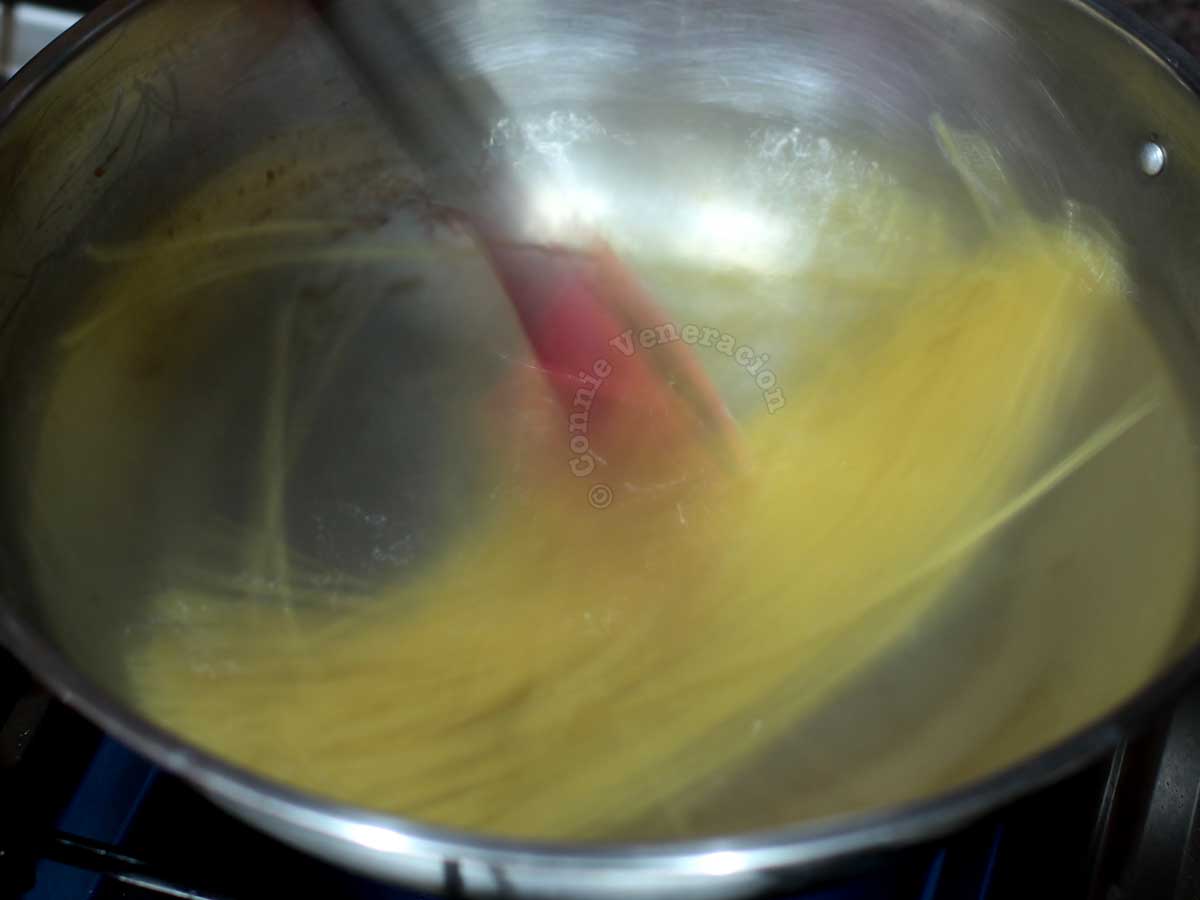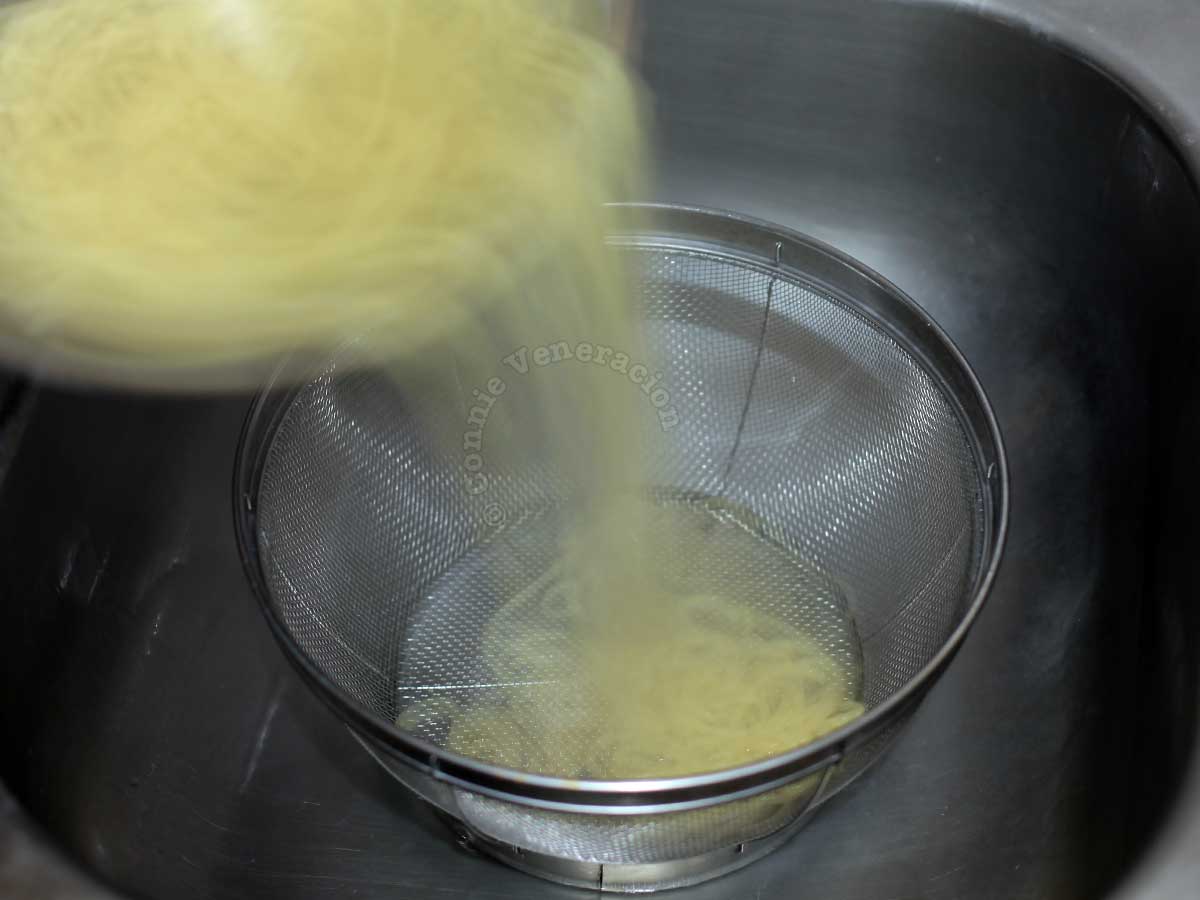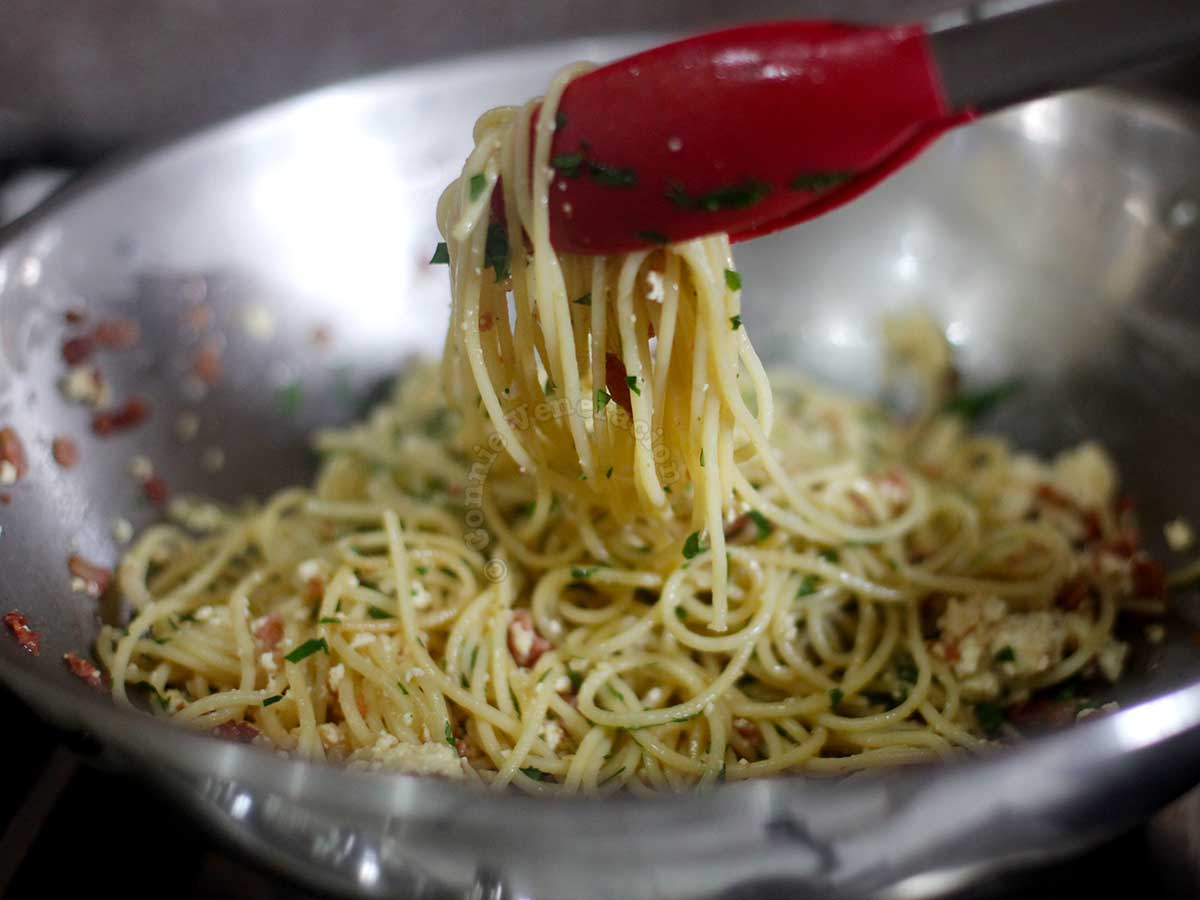There’s this hype going around that we’ve all been cooking pasta the wrong way — that we should just use a minimal amount of water and keep the heat low etcetera, etcetera. But it’s just click bait. Nothing more, and nothing else.
There’s pasta and there’s great pasta. And cooking great pasta takes more than dropping the noodles in boiling water. To cook great pasta,al denteas the Italians say, we have to discard the myths and hype.
It starts with the right utensil, a little knowledge about how to tell when water is boiling and a few little tricks that you may think unimportant but which really spell the difference between so-so pasta and pasta that’s worthy of a gourmet.
Let’s start with the cooking pan.
Is a pasta pan essential?
Pasta pan? You know, the pot that’s as tall as the length of a spaghetti noodle? Some are even equipped with strainers. Do we really need something like that?
I’d say no.
All that is necessary is a cooking pan with a thick bottom (because the noodles may stick to the bottom if it is thin) that’s large and deep enough to allow the noodles to swim freely while cooking.
Cook with plenty of boiling water
If you cook pasta in too little water or if the water isn’t hot enough, the pasta will turn soggy. Why? The starch will thicken the water too much. Wet starch is sticky. How do you think that will affect the noodles?
How much water for a specific amount of pasta?
Chefs say it’s a gallon of water for every half pound of pasta. I don’t really measure. I just make sure that there’s plenty of water for whatever amount of pasta I’m cooking.
So, we have a utensil and the amount of water. We boil the water before we add the pasta. And when we say “boil” it means bring the water to a rolling boil — not simmering, not starting to boil but a rolling boil.
Hold the pasta vertically then drop into the water
When the water is boiling, it’s time to drop in the pasta. Is there a right way of doing this? Yes, actually for long pasta shapes like spaghetti, fettuccine and linguine.
The bad way is to hold the pasta horizontally and dropping the noodles into the water in that position.

The better way is to hold the pasta vertically above the water and dropping the noodles so that they separate from one another as they hit the pan.
Why? What difference does it make?
Pasta is starch and, again, wet starch is sticky. The moment the pasta comes in contact with water, the starch is released. If the noodles are all stacked together (as when they are dropped into the water in a horizontal position), they will clamp together. Whereas, dropping them vertically will give each noodle enough space away from the others.
Stir the pasta to separate the noodles

Yes, I stir the pasta during cooking but not for the entire cooking time.
When the pasta hits the boiling water, it will start to soften at once. I stir them to break up any clumping. I also prefer to stir the noodles midway through the cooking time. Some say it isn’t necessary; I find it useful.
Is adding salt to the water necessary?
Is it necessary to add salt to the water to cook the pasta? No, but adding salt has two advantages.
First, you add flavor to the pasta during the first stage of cooking your pasta dish. When you think about layering flavors (seasoning a dish at various stages of cooking), it’s the first step.
The second advantage has to do withboiling point elevation. Adding salt to the water raises the boiling point. Ergo, the better for the noodles.
Is it necessary to add oil to the water?
I used to think so. I thought that oil would help keep the noodles separate. But then I realized how silly it was. Oil and water never the twain will mix, the oil will always stay above the water so it really won’t do anything to the pasta in terms of separating the noodles.
Should the pan be covered or uncovered?
I used to think it was a bad idea to cover the pan. But, in one of the episodes of her cooking show, Biba Caggiano said it was alright to cover the pan. Makes sense, really. Leaving the pan uncovered will make it harder for the water to maintain the required boiling point. Worse, the water will evaporate faster and that’s not good for the pasta because it needs to swim in plenty of water.
If you cover the pan, you can lower the heat a bit. Not low heat as that will bring the water down to a simmer. You want to keep it boiling. So, if you lower the heat, lower it to medium. I find that at that setting, the water continues to boil.
How long should the pasta cook?
That depends on the pasta shape. Pasta thickness varies depending on the shape. Spaghettini, for instance, will cook much faster than fettuccine. Check the pasta packaging for the recommended cooking time.
The al dente stage
Now, that term that we hear a lot but for which there is no exact definition —al dente. Well cooked pasta should be al dente, but what the heck does al dente mean?
The literal translation is “to the bite” (or “to the tooth”) but that’s not really a definition, is it?Al dente is descriptive of that cooked state of the pasta where it is firm (but not hard) so that it needs to be chewed. If the pasta dissolves when the tongue is pressed against the roof of the mouth, it is too soft and has passed the al dente stage.
The best way to tell if the pasta is al dente is by picking up a piece and biting it. There should be the slightest resistance at the center. Visually, if you cut the noodle, you should see a tiny spot at the center (a thin, thin ring in the case of macaroni and other tube-shaped pasta). That’s al dente.
Does pasta need to be rinsed in cold water after cooking?

When the pasta is done cooking, we pour it into a colander to drain. Do we douse it with cold water? Again, this was one mistake I made for a long time.
Apparently, it is a better practice NOT to rinse the pasta in cold water after cooking because rinsing removes the soft starch that coats the noodles. You want that starch where it is because that will ensure that the sauce will stick to the noodles.
But won’t the pasta continue cooking in the residual heat if the noodles aren’t given a cold water bath? Yes, that’s true. What I do is to undercook the pasta by a minute or two, then let it finish cooking in the sauce.

